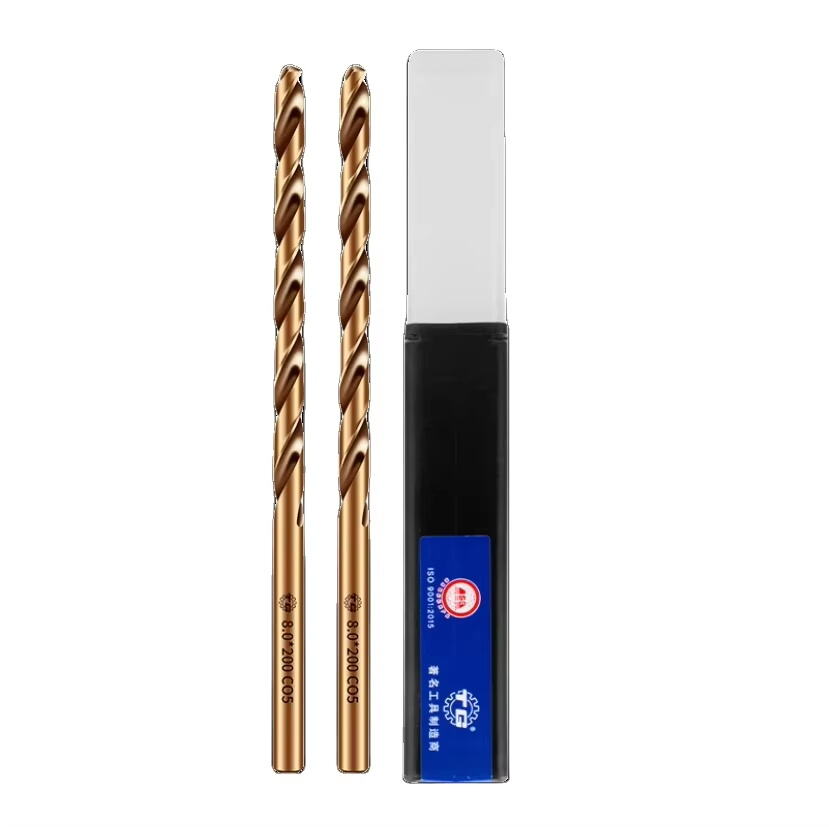Understanding the Importance of Die Steel Selection
Impact on Mold Performance and Longevity
Choosing the right die steel makes all the difference when it comes to how well molds perform and how long they last. High quality steel stands up better to wear and tear, and doesn't deform as easily, which means these molds tend to stay in service much longer before needing attention. Fewer breakdowns mean less downtime for repairs and replacements over time. Some data shows that good quality die steel can actually boost production runs by around 30%. Take H13 steel for instance. It handles heat really well, something that matters a lot in sectors like automotive manufacturing where molds are constantly under pressure from extreme conditions during operation.
Critical Role in Production Efficiency
The type of die steel used plays a major role in how well injection molding works in practice. When manufacturers pick the correct material, they get better heat transfer characteristics which means shorter cycle times and higher output rates across the board. Some actual shop floor experiences show that smart decisions about die steel choices have boosted production efficiency by around 20 percent in certain situations. Good control over cooling and heating systems does more than just cut down on waiting periods though. These systems actually enhance what gets produced during each run, so picking the right steel isn't just important it's absolutely essential if companies want their operations running smoothly day after day.
Avoiding Costly Defects Through Material Choice
Picking the right material for die steel makes all the difference when it comes to avoiding problems such as surface flaws and incorrect dimensions. Spending money on good quality die steel actually protects businesses from losing big bucks because of faulty products coming off the line. Looking at what's happening across industries, companies using poor quality die steel end up dealing with defects that can cost them over $100k every year in some cases. When manufacturers select materials specifically designed for their particular needs, they get better quality products while cutting down on those expensive stoppages and having to fix things later. This just goes to show how important getting the material selection right really is for anyone involved in making molds these days.
Evaluating Your Mold Requirements
Material Compatibility: Matching Steel to Molded Substances
Getting the right match between die steel and what gets molded matters a lot when trying to get good adhesion and proper release from products. Various plastics and metals work best with certain kinds of die steel if we want quality finishes and smooth demolding. Take injection molding with abrasive stuff like glass filled resins for example these need special steels that can stand up to wear better than regular options. Steels like H-13 or P-20 are commonly used here. When manufacturers get this matching wrong, costs go up fast and there ends up being a lot more scrap because things just don't come out right. The bottom line is getting those material combinations right saves money in the long run while keeping waste down.
Therefore, selecting the right steel for the particular substance being molded is essential to maintaining efficiency and reducing costs. If you're using die steel for different applications, you must understand the inherent properties of the steel for compatibility.
Production Volume: High vs. Low-Cycle Applications
The amount being produced really affects which die steel gets selected. When dealing with high cycle counts, something tougher like pre-hardened S-7 becomes necessary. For smaller runs though, aluminum works just fine as a budget friendly alternative while still maintaining good quality standards. Most seasoned engineers will tell anyone who asks that looking at lifetime costs across varying production levels makes all the difference when planning budgets and allocating resources properly. Take H-13 steel for instance it's built specifically for those massive production runs where tooling needs to last through millions of cycles. The durability factor means fewer breakdowns and repair bills down the road, which is why so many shops stick with H-13 whenever they're running large batch orders. Getting this right about production volume isn't just about saving money either better matching materials to workload actually improves overall shop efficiency and bottom line results too.
Operating Conditions: Heat and Pressure Demands
Knowing exactly what kind of environment a mold will face makes all the difference when picking out die steel. For those really tough jobs where heat and pressure run high, we need something special like 420 SS steel. This particular stainless steel holds up well against tight tolerances requirements and stands up to wear and tear even when dealing with rough materials. We've seen plenty of cases where folks save money upfront but end up paying dearly later on because they didn't match their steel choice to actual working conditions. Mold breakdowns happen fast during these extreme situations, causing major production delays. When looking at options, manufacturers should think about both temperature levels and how abrasive the material being processed actually is. These factors have a huge impact on how long any given die steel will last before needing replacement. While premium quality steel costs more initially, it pays off handsomely over time by reducing unexpected failures and keeping operations running smoothly day after day.
Types of Die Steel for Molds: A Comparative Overview
Cold-Work Die Steels for Precision and Wear Resistance
Cold work die steels play a crucial role when manufacturing processes require both precision and lasting performance. What makes these materials stand out is their ability to resist wear over time, which explains why they're commonly used in cutting tools and forming punches across multiple industries. Research shows these special steels improve product accuracy because they maintain consistent dimensions even after extended use. The strength of cold work die steels means parts last longer while still producing quality outputs day after day. From automotive components to aerospace parts, manufacturers rely on this material特性 for its combination of toughness and reliability in demanding production environments.
Hot-Work Die Steels for High-Temperature Applications
Hot work die steels are built to handle intense heat conditions, which makes them ideal choices for operations such as forging and high pressure die casting applications. What sets these materials apart is their ability to resist heat damage pretty well, keeping their shape intact even at temps above 700 degrees Celsius. Manufacturers have been using these steels for years because they just don't break down under stress. Real world testing shows that hot work dies can take a beating in furnace environments while still delivering consistent results over time. For shops dealing with regular exposure to extreme temperatures, investing in quality hot work steel tools pays off in both durability and production efficiency.
Plastic Mold Steels for Corrosion and Polish Needs
Plastic mold steels get made specially to handle the chemical attack from some plastics while still allowing really smooth surface finishes. This matters a lot for those shiny, attractive looks that consumers want on their products these days. Most engineers will point toward specific types of plastic mold steel if they need better protection against rust and wear. The right steel choice means the molds stay looking nice for longer periods too. Basically, these materials form the backbone of manufacturing processes where both appearance and longevity count for something in the final product quality.
Key Properties to Match with Application Demands
Hardness vs. Toughness: Finding the Optimal Balance
Getting the balance right between hardness and toughness matters a lot when picking out die steel because these characteristics really affect how long tools last and what kind of quality they produce. Hard materials stand up better against wear and tear over time, but if something isn't tough enough it will chip or crack when subjected to heavy loads. Finding that sweet spot lets manufacturers get more mileage out of their tools while maintaining product standards in different manufacturing settings. Industry experts generally agree that there's no one size fits all approach here either. The ideal level of hardness depends heavily on exactly what the tool needs to do day to day. For instance, parts used in high impact environments need different specifications compared to those working under lower stress conditions. Manufacturers have learned through trial and error that matching material properties to actual operating conditions makes all the difference in performance and longevity.
Wear Resistance for Abrasive Materials
Working with abrasive materials means wear resistance matters a lot for keeping molds intact and minimizing production stoppages. Steel molds that stand up well against wear tend to last much longer since they don't break down so easily from constant rubbing and scraping. For instance, in sand casting operations where grit gets everywhere, poor wear resistance leads to all sorts of problems. The numbers tell a story too many manufacturers ignore. When molds wear out faster than expected, companies end up paying through the nose for emergency fixes and lost production time. That's why smart shops invest in quality steel grades known for their toughness when facing abrasive conditions. Getting this right saves money in the long run while keeping operations running smoothly even under tough circumstances.
Heat Treatability and Thermal Stability
When die steel can go through proper heat treatment, it really makes a difference in how it performs once it's actually put to work. The right kind of heat treatment boosts hardness and strength, which matters a lot when the steel needs to handle tough jobs day after day. Thermal stability becomes pretty important too, especially in places where temperatures swing wildly back and forth throughout the day. Some studies show that getting the heat treatment right can make die steels last longer and perform better overall. For manufacturers working on production lines, this means their tools stay reliable even when things get hot or cold unexpectedly during operations.
Balancing Machinability and Cost Considerations
Ease of Processing: Pre-Hardened vs. Tool Steel Grades
In terms of how easy something is to machine, knowing the difference between pre-hardened and regular tool steels matters a lot when trying to get production running smoothly. Pre-hardened materials save shops money and time because they come ready to work with right out of the box. That's why many manufacturers go this route when they need parts fast. Take P20 steel as an example it strikes just the right balance between being hard enough and still easy to cut, so there's no need for extra heat treatment steps that slow things down and cost extra cash. But when applications call for really tough stuff that won't wear away, old fashioned tool steels still hold their own. These tougher alloys last longer and stand up better against wear and tear, especially important in places where machines are under constant stress. Sure, working with tool steel takes more effort upfront, but the payoff comes later through longer lasting components that don't fail unexpectedly.
Budget Constraints vs. Long-Term Durability
Budget limitations definitely play a big role when selecting materials, but focusing too much on what something costs at first glance can actually end up costing more down the road. Quality die steel does come with a higher price tag initially, yet it pays off over time because tools last longer between replacements and need less maintenance work. Take H13 steel for instance. Yes, it's pricier than some alternatives, but this stuff stands up remarkably well against wear and tear while maintaining strong structural integrity. That means tools made from H13 stay functional much longer before needing replacement, which cuts down on those frustrating production stoppages. Looking at the numbers tells us something important too: companies that invest wisely in durable materials typically see better financial outcomes later on. The machines run smoother, breakdowns happen less frequently, and overall productivity stays high without constant interruptions from equipment failures.
Total Cost of Ownership Calculations
Getting a full grasp on what tooling investments really cost means looking at total cost of ownership (TCO) instead of just what something costs upfront. The TCO method considers all sorts of things besides purchase price like regular maintenance needs, unexpected downtime when tools break down, plus ongoing material costs during the entire life cycle of the equipment. When companies factor all this into their buying decisions, they see the real money picture much better. Most manufacturing professionals will tell anyone willing to listen that using TCO models makes sense for evaluating whether die steel purchases are worth it in the long run. Looking at how tools perform over years rather than months helps businesses avoid those surprise expenses that pop up later. Smart shops know that spending extra now sometimes saves them headaches and cash later down the road.
Frequently Asked Questions
Why is the selection of die steel important?
The selection of die steel is crucial because it affects mold performance, longevity, and the overall efficiency of production processes. High-quality die steel enhances wear resistance, reduces cycle times, and prevents costly defects.
How does die steel impact production efficiency?
Die steel impacts production efficiency by optimizing heat transfer properties, which leads to reduced cycle times and improved throughput, ultimately enhancing manufacturing productivity.
What properties should be considered when selecting die steel?
Key properties to consider include hardness, toughness, wear resistance, heat treatability, and thermal stability. Balancing these properties ensures the die steel meets the specific demands of the application.
How can the right die steel help avoid defects?
Choosing the right die steel minimizes surface imperfections and dimensional inaccuracies, reducing the risk of defects, thereby safeguarding against financial losses and production downtimes.
What is the total cost of ownership in die steel selection?
The total cost of ownership (TCO) in die steel selection includes not just the initial purchase cost but also maintenance, downtime, and material expenses throughout the lifespan of the tool.


